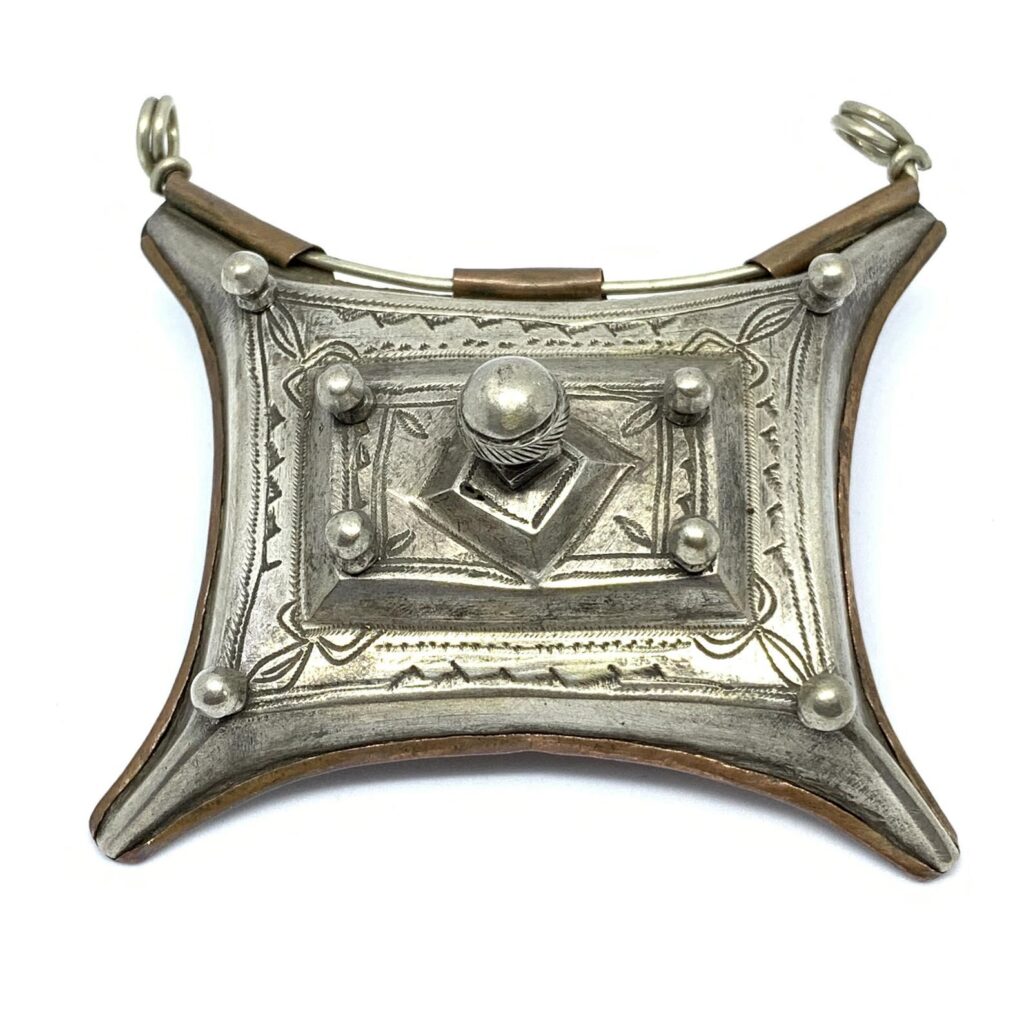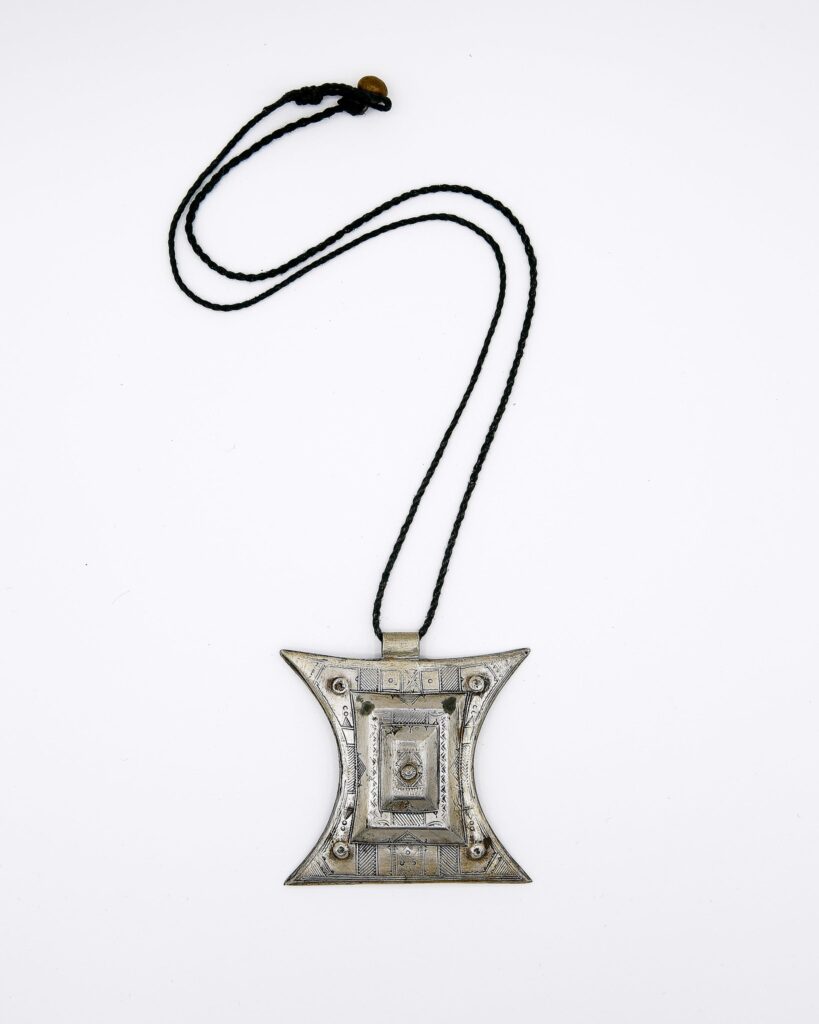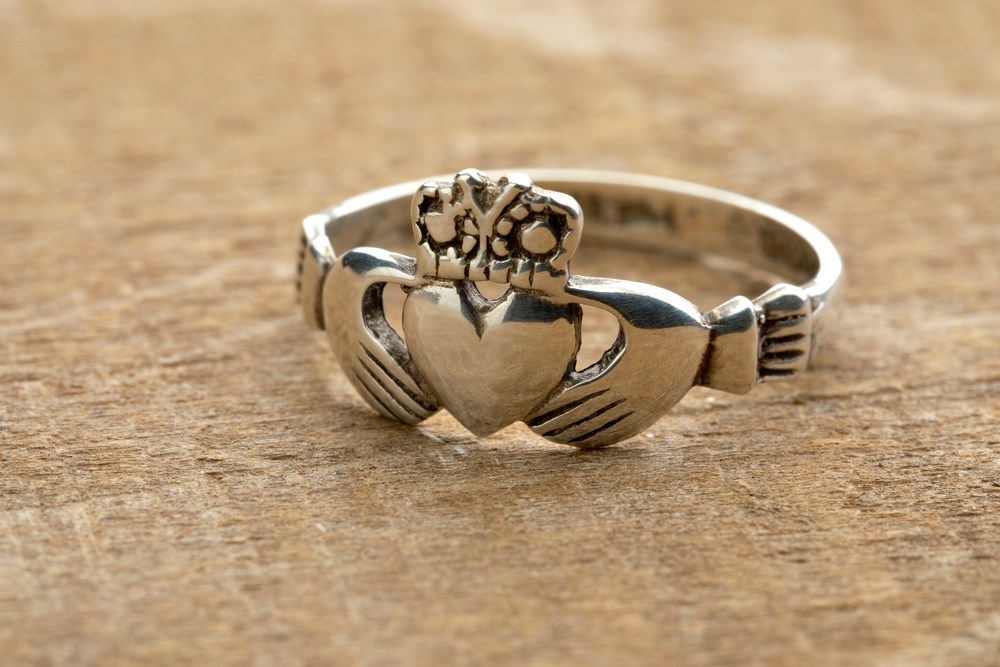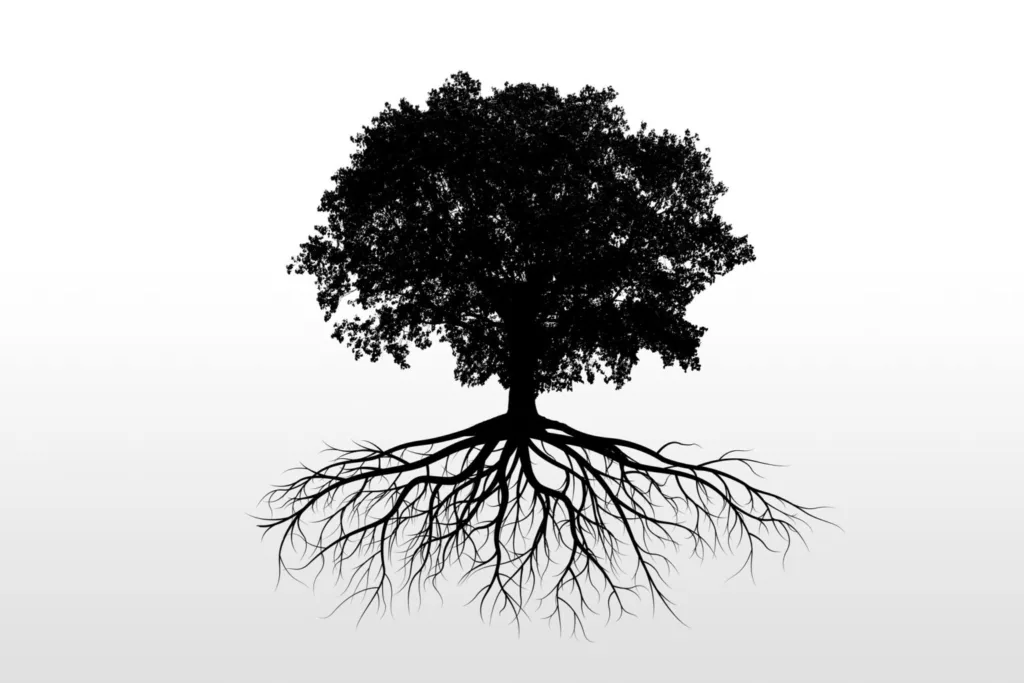
Tcherot: the amulet of the Saharian people
TTcherot: the amulet of the Saharian people
LThe Tcherot are talismans, worn by the Tuareg of the Sahara and by other Berber people in the extreme south of Morocco and Western Sahara.
They are supposed to bring luck and blessings (baraka) and drive away evil. The effectiveness of the talismans lies in their intrinsic power that is believed to come from the metal of which they are made (silver, iron, copper, brass), from their content and from their shape.
In the Tuareg language (Tamahaq), the literal sense of the word “Tcherot” means “letter”, “message” or “paper on which something is written”.
The Tcherot often has the form of a metal or leather box, lozenge-shaped where we can identify the female symbols: “X” as a basic shape may be regarded as descended from the Stone Age civilization of the Mediterranean area, lozenge and triangle which are cut out of the dark leather like eyes; and also spirals, a symbol of the Universe in many ethnies.

The Techerot often encloses a sheet of paper, closed and sealed, on which is written in Arabic, one or more verses of the Quran selected by an Imam or a Marabout, at the request of a person who wants to be protected from the evil eye, curses, hatred, diseases or also to receive favors or luck.
Other times a Tcherot may contain desert sand, small objects, or simply the “whiff” of the Marabout (Religious leader. The marabout is often a scholar of the Qur’an, or religious teacher. Others may be wandering holy men who survive on alms, Sufi Murshids (“Guides”), or leaders of religious communities).
Our Tcherot collection in the Touareg section








